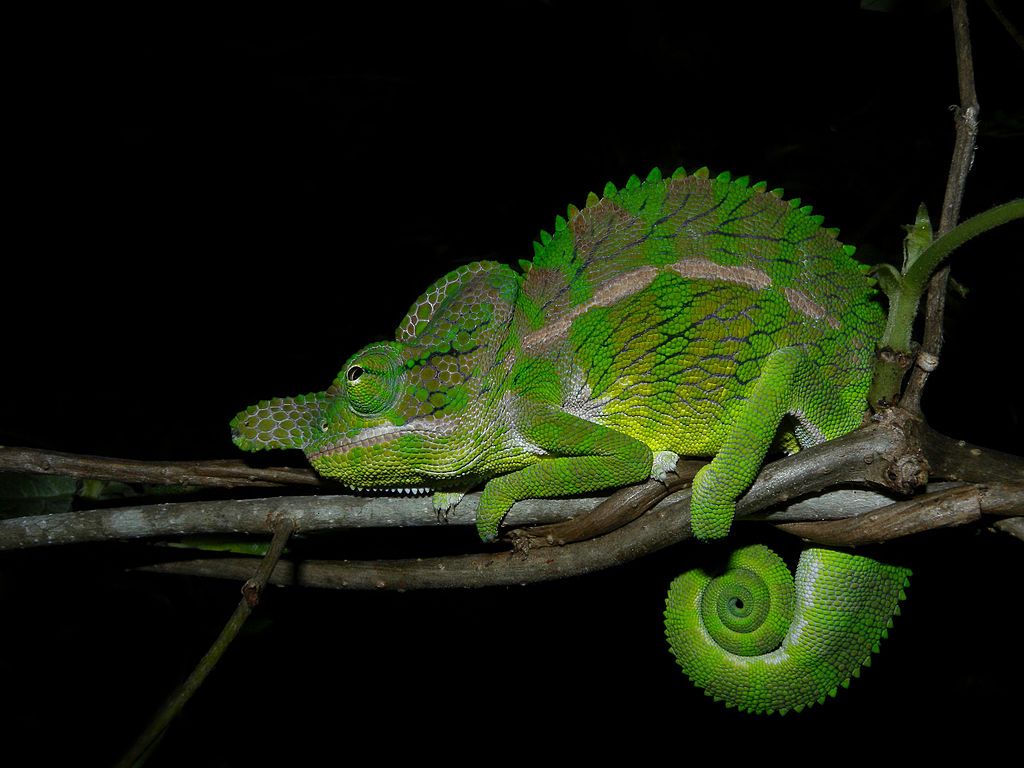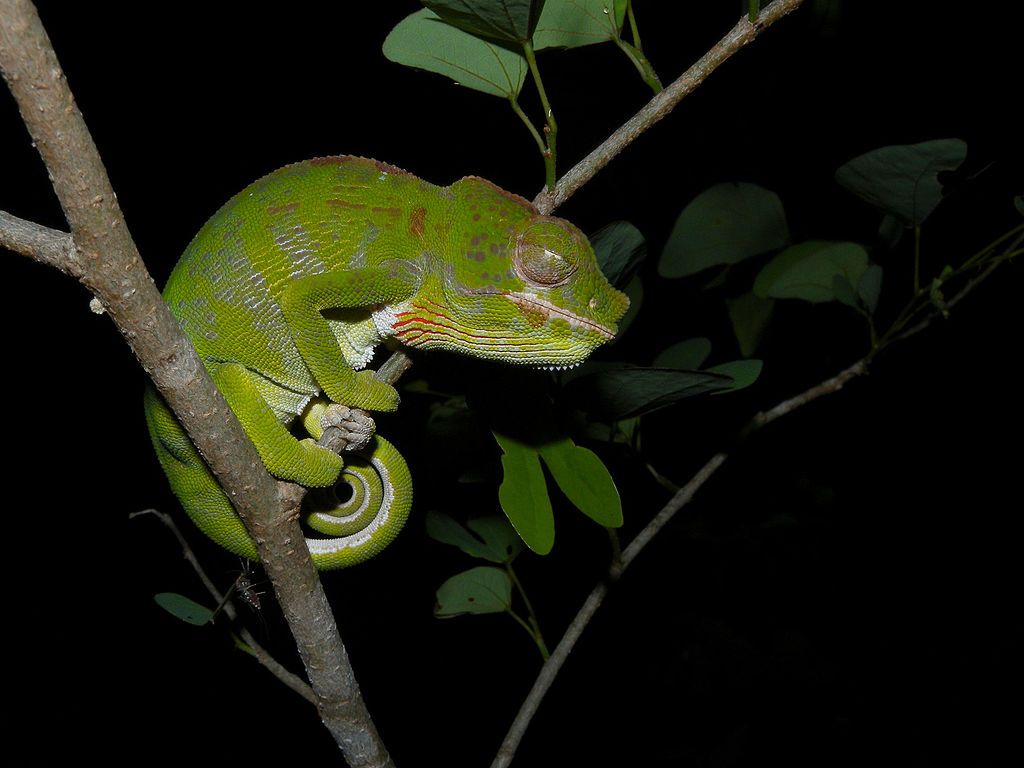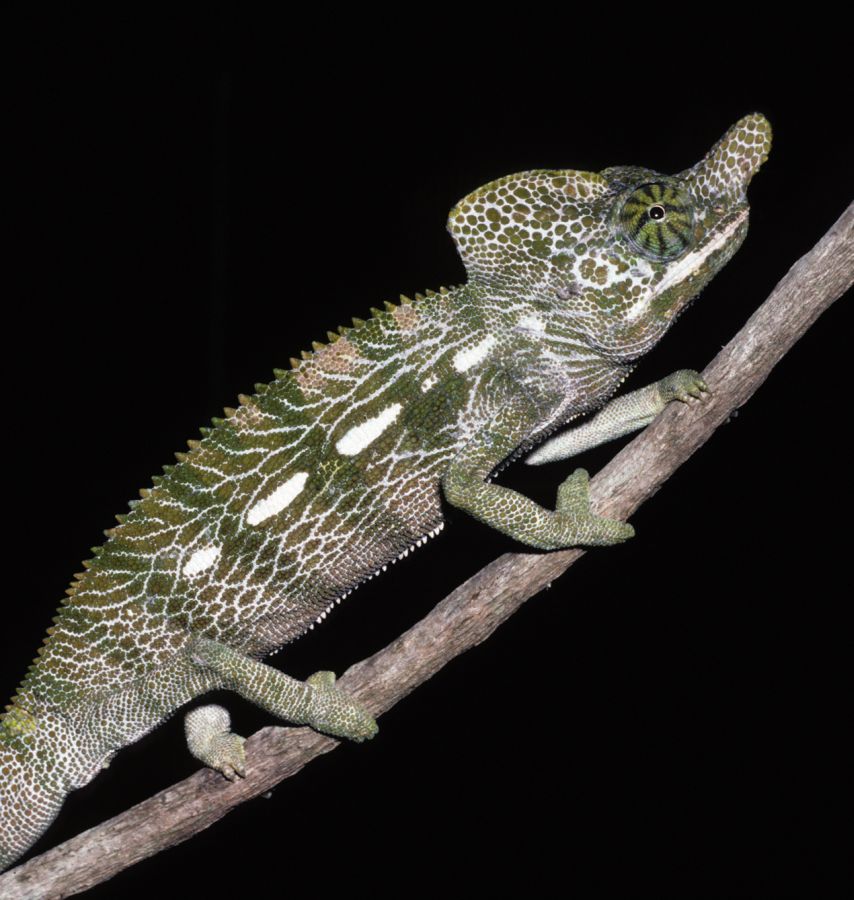In November, when the rains begin in southwest Madagascar, all the Labord’s chameleons (Furcifer labordi) hatch from eggs and begin their growth spurt to adulthood. They will live a glorious four to five months.

By January they are sexually mature, the males fight for dominance, they breed and the females lay eggs. (Male shown above. Females lack the snout “horn” and bony head casque.)

By the end of March, all of them die. Every one of them. All that’s left of Labord’s chameleons are their eggs, waiting eight months for the next rainy season.
There is no other terrestrial vertebrate with a shorter known active life-span.
— from Labord’s chameleon description at Wikimedia Commons
Our own lives are short, too, compared to Galapagos tortoises (190 years), Greenland sharks (300-500 years) and giant bristlecone pines (5,000 years).
Make every day count.
Thanks to Jason Bittel (@bittelmethis) for his tweet that brought Labord’s chameleon to my attention.
(photos from Wikimedia Commons; click on the captions to see the originals)
